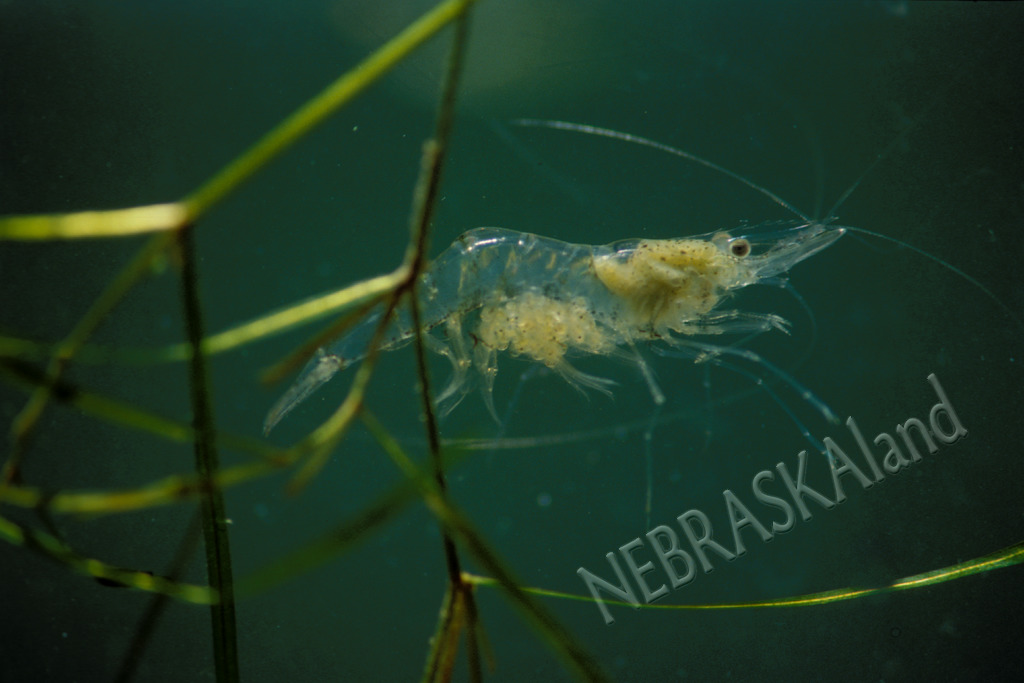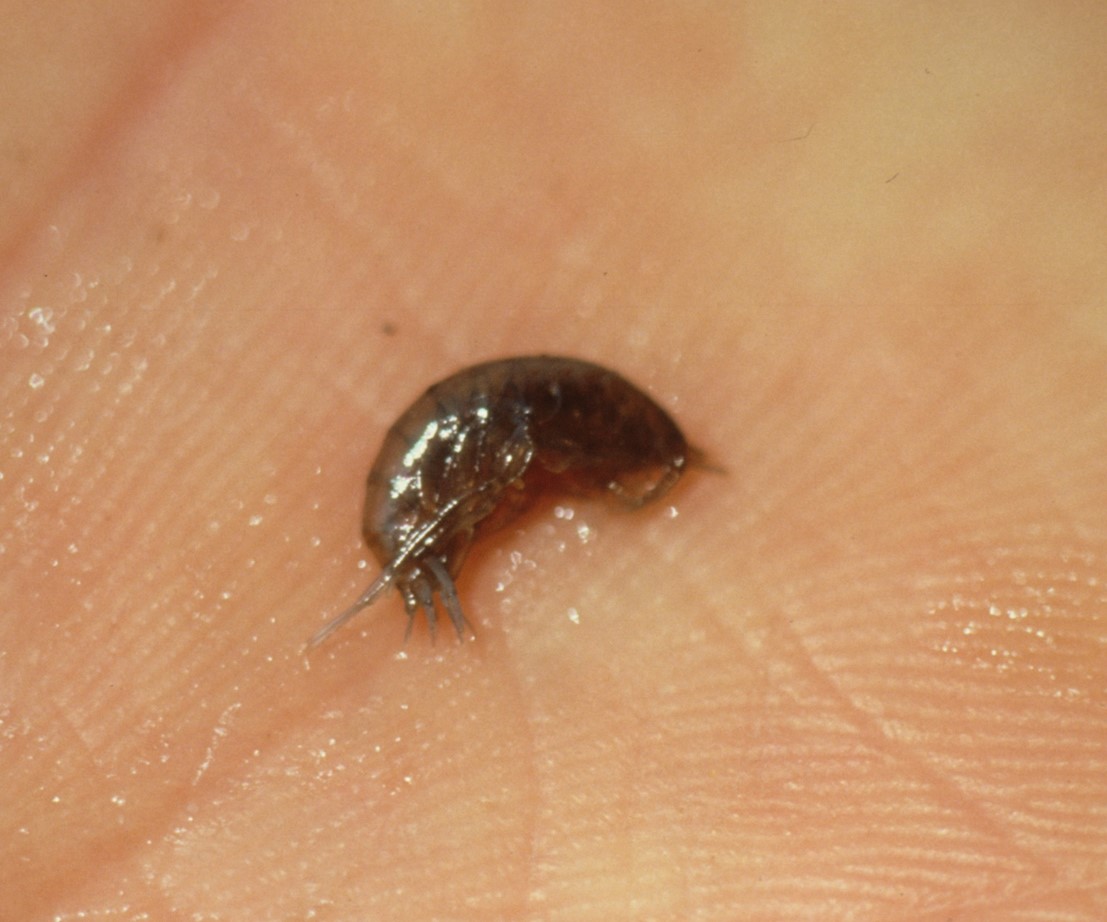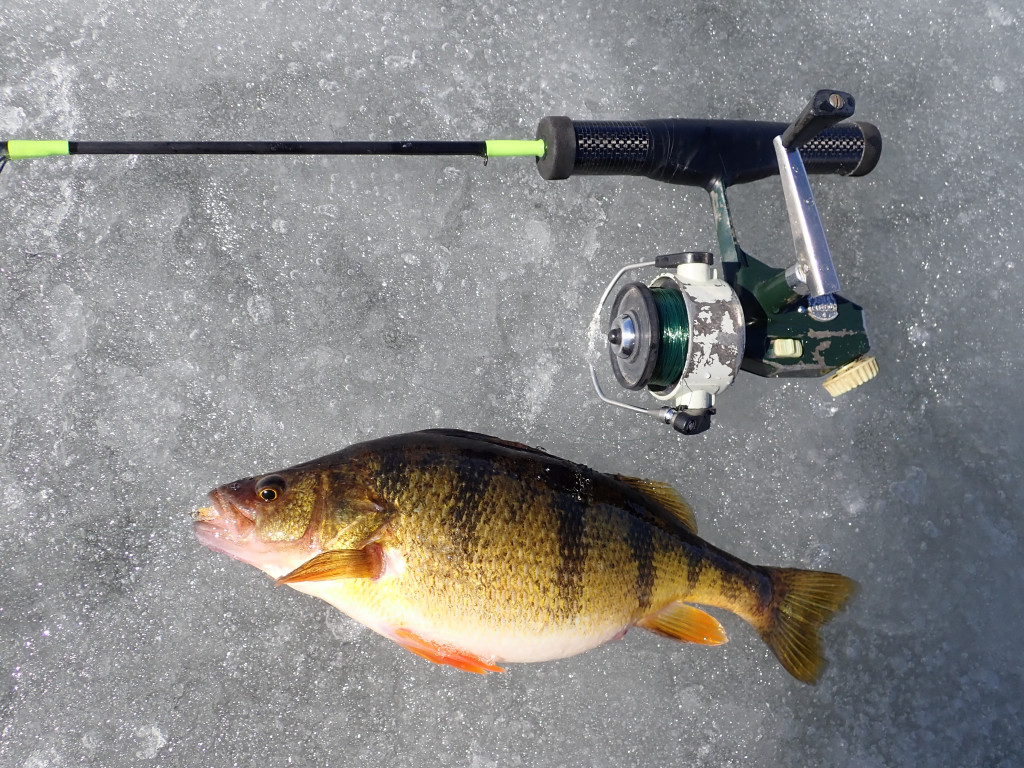I hear the comments every winter, usually in relation to some waterbody or another producing BIG yellow perch. The narrative usually goes like this, “The perch there grow so large because of all the freshwater shrimp they eat.” Many times, the comments refer to someplace other than Nebraska, often someplace to the north of Nebraska. Of course, the belief is the presence of these “freshwater shrimp” is obviously why the fishing is so much better “up there”.
Time for a little lesson in aquatic ecology. . . .
There is a species of freshwater shrimp, glass shrimp.

Glass shrimp are native to southeastern states. They are NOT native to Nebraska nor points north. We have introduced glass shrimp into a few waters in Nebraska. However, I do not believe they have been introduced in any of our neighboring states.
Glass shrimp thrive in clear waters with aquatic vegetation. We have had limited success with the introductions in Nebraska. Yes, we have had glass shrimp survive and even reproduce. Unfortunately, we have not seen any cases where hordes of glass shrimp produced a bunch of fat and fast-growing panfish.
So, what are those little shrimp-like things seen in other waters? They sometimes even “motor up” into your ice-hole? Well, they are a crustacean, but they are NOT shrimp. They are amphipods or more commonly called “scuds”.
That picture does not give a good perspective. Amphipods can vary in size. I have seen ’em just barely big enough to see with the naked eye, up to a little less than a half inch. Amphipods are found pretty much anywhere there is water. There probably is not a waterbody in Nebraska, nor our neighboring states, that does not have at least some amphipods. Yes, fish love ’em.
Scuds are also most successful in relatively clean water with aquatic vegetation or flooded vegetation. They tend to be most abundant in waters isolated from fish where they are not all eaten. I have seen waters in Nebraska where after wading my waders would be covered with amphipods. In some cases the bottom in shallow water literally crawled with scuds. Newly-flooded habitats are ideal for amphipods, and a lot of other “bugs” fish like to eat for that matter.
Yes, an abundance of scuds swimming around would be indicative of good water quality, good habitat, and probably great conditions for fish, especially panfish. However, the amphipods themselves are not THE reason the perch or other panfish are particularly fat and large. They are just a result of the favorable habitat and water conditions from which the fish also benefit.
Most of the amphipods I have seen have been a greenish or gray color. Pinks and oranges are also common. In fact, dead amphipods are often an orange color. They get around by “running” along the bottom or on substrates, but they also swim through the water. Scuds tend to be most active during low-light conditions or after dark.
No, none of these things really make a big difference. But, it does help to understand what makes some fisheries “tick”, and it always helps to understand what predator/prey interactions are happening below the surface.
The post Shrimp? appeared first on Nebraskaland Magazine.



















